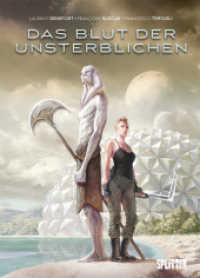- ホーム
- > 洋書
- > 英文書
- > Science / Mathematics
Full Description
In crystal chemistry and crystal physics, the relations between the symmetry groups (space groups) of crystalline solids are of particular importance. Part I of this book presents the necessary mathematical foundations and tools: the fundamentals of crystallography with special emphasis on symmetry, the theory of the crystallographic groups, and the formalisms of the needed crystallographic computations. Part II gives an insight into applications to problems in crystal chemistry. With the aid of numerous examples, it is shown how crystallographic group theory can be used to make evident the relationships between crystal structures, to set up a systematic order in the huge amount of known crystal structures, to predict crystal structures, to analyse phase transitions and topotactic chemical reactions in the solid state, to understand the formation of domains and twins in crystals, and to avoid errors in crystal structure determinations. Part III delves further into some specific topics, namely the isomorphic subgroups of space groups, the theory of phase transitions, and computer programs dedicated to crystallographic group theory. In this new edition, several topics have been extended to cover the latest scientific findings, a new chapter has been added dealing with pertinent computer programs, and references have been updated.
Contents
1: Introduction
Part I - Crystallographic Foundations
2: Basics of crystallography, part 1
3: Mappings
4: Basics of crystallography, part 2
5: Group theory
6: Basics of crystallography, part 3
7: Subgroups and supergroups of point and space groups
8: Conjugate subgroups and normalizers of space groups
9: Equivalent descriptions of crystal structures and chirality
Part II - Symmetry Relations between Space Groups as a Tool to Disclose Connections between Crystal Structures
10: How to handle space groups
11: The group-theoretical presentation of crystal-chemical relationships
12: Symmetry relations between related crystal structures
13: Pitfalls when setting up group-subgroup relations
14: Derivation of crystal structures from closest packings of spheres
15: Crystal structures of molecular compounds
16: Symmetry relations at phase transitions
17: Topotactic reactions
18: Group-subgroup relations as an aid for structure determination
19: Prediction of possible structure types
20: Historical remarks
Part III - Widening Excurses to Special Topics
21: Isomorphic subgroups
22: On the theory of phase transitions
23: Symmetry species
24: The Bilbao Crystallographic Server
Appendices








